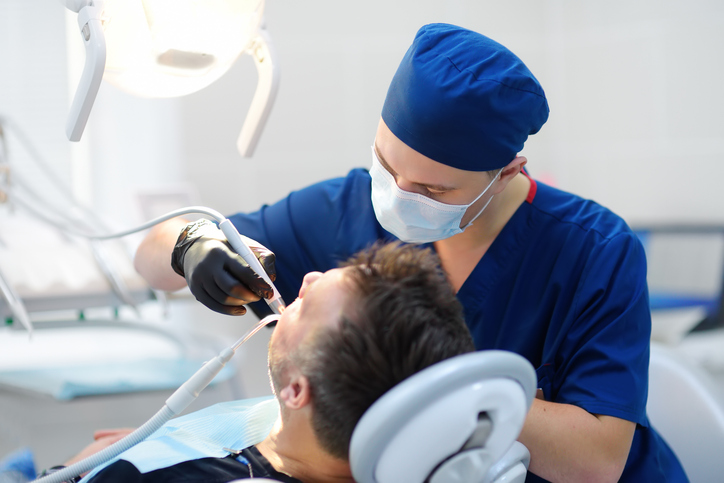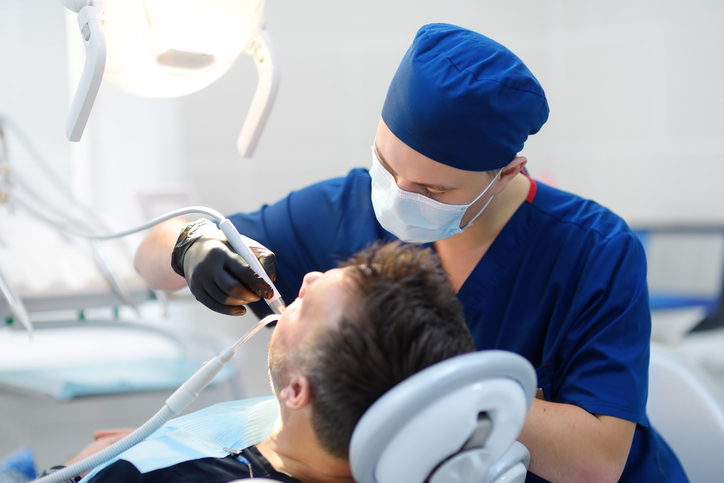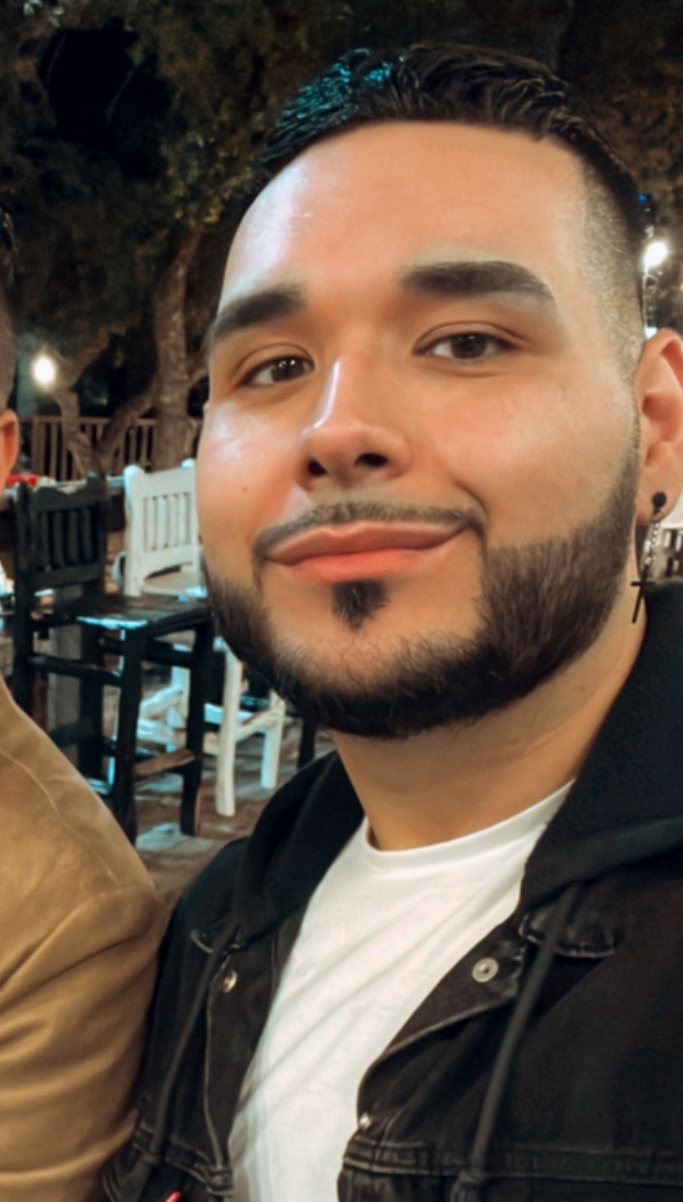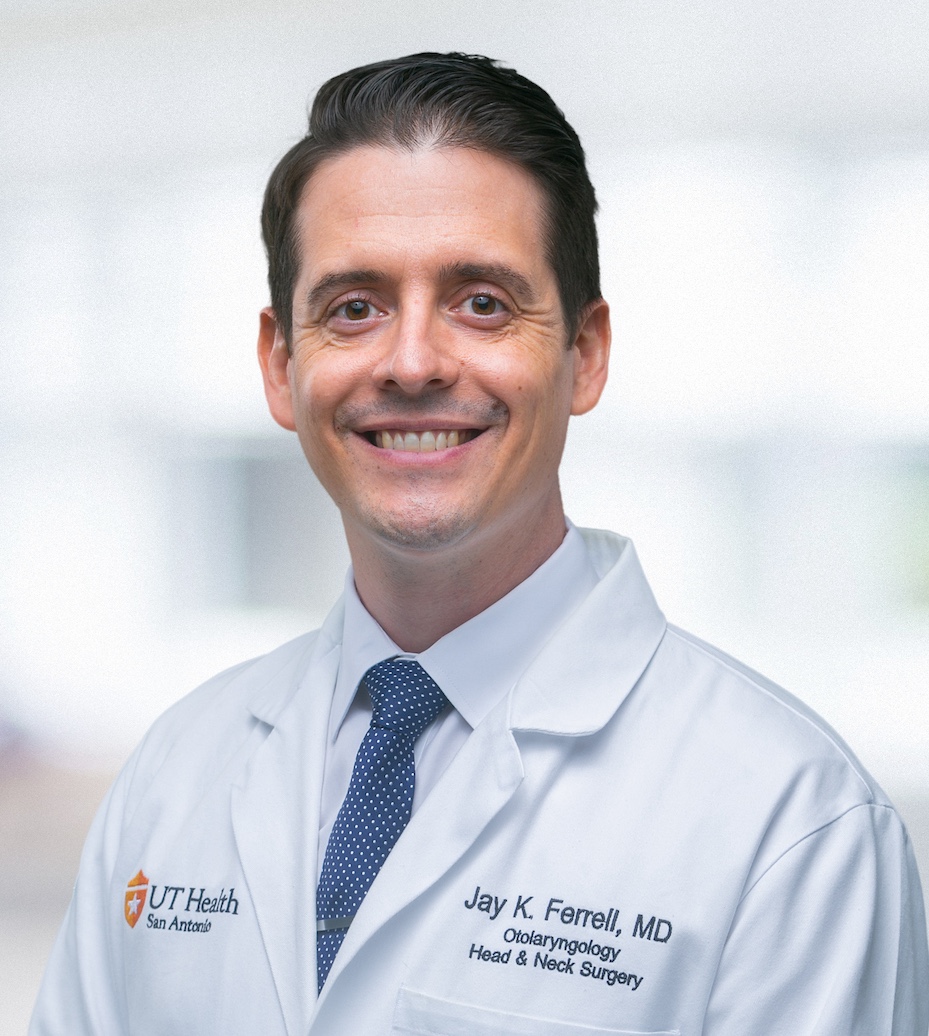Sometimes it's something


Routine dental visit leads to life-saving cancer diagnosis
Angel Inocencio never expected a routine dental cleaning to change his life. At 31, with no family history of cancer and no obvious symptoms, the last thing on his mind was a serious medical diagnosis. But thanks to his dentist’s keen eye, he received the urgent care he needed in time.
During a routine appointment, Inocencio’s dentist noticed a lesion on the far back of his tongue in an area that was difficult to see on his own. Though Inocencio said he never felt any pain, he later realized subtle signs had been present all along.
“When I would eat something, I was always having to clear my throat,” Inocencio said. “Like every time for about 20 minutes after I ate anything. I was also having these stomach problems, but it never really dawned on me like, hey, this is not normal. I guess I just kind of adapted to that feeling.”
Initially, Inocencio had dismissed the only visible sign — a small canker sore. So, when his dentist said it could be a sign of cancer and urged him to get the lesion checked out, the news came as a shock.
“To be told such drastic news, I was definitely blindsided and just very taken aback, considering that I am pretty young,” he admitted. “But I was very glad that my dentist put that sense of urgency to get it looked at because it’s super important.”
An unexpected diagnosis
Inocencio recalls nervously waiting to be seen by a specialist after his dentist initially found the lesion.
“It was a very tough time for me,” he said. “I didn’t know what to think. Like, is it treatable? What if I do have it? What if I don’t and I’m just psyching myself out? Am I terminal? What stage is it? Your mind just races through all kinds of things when you get told that you might have cancer.”
When he was examined by Jay Ferrell, MD, a head and neck oncologist at Mays Cancer Center, Inocencio was diagnosed with Stage 2 oral cavity squamous cell carcinoma, a relatively rare occurrence for someone his age.

“Angel definitely doesn’t fit the stereotype of a head and neck cancer patient,” said Inocencio’s surgeon, Jay Ferrell, MD, associate professor of head and neck surgery in the Department of Otolaryngology and director of the Division of Head and Neck Surgery at The University of Texas Health Science Center at San Antonio. “But our understanding of who develops this type of cancer is starting to change.”
No prototypical patient
Head and neck cancers are the sixth most prevalent form of cancer in the United States, and squamous cell carcinoma accounts for over 90% of oral cavity malignancies.
Ferrell explained that, historically, head and neck cancers were viewed as a lifestyle disease. The condition has typically been linked to heavy tobacco use and drinking and is most often seen in men over the age of 55.
“It may not be the first thought in a healthy 30-something-year-old that a lesion in the mouth could be cancer. But we’re actually seeing increased rates of oral cavity cancers even in nonsmokers and younger people, and we don’t entirely know yet why that is,” Ferrell said.
“It’s important to recognize that there is no prototypical head and neck cancer patient. This is no longer just relegated to elderly people who smoke; it can happen in people in the prime of their lives who don’t have those traditional risk factors.”
What to watch
Oral cancers usually present as a sore or lesion on the tongue or other part of the oral cavity that doesn’t heal and becomes painful as it grows deeper into the nerves, Ferrell explained. However, sometimes it can be as subtle as a discoloration of the tongue, like a raised white or red patch.
“Interestingly, Angel didn’t experience much pain, which was overall good for him because this type of cancer is notoriously painful due to the tongue’s rich nerve supply,” Ferrell said. “So, if you notice discoloration or a sore that doesn’t heal over a few weeks and keeps getting bigger, or there’s a spot in your mouth that bleeds repeatedly when brushing, you should bring that to your physician’s attention,” he advised.
Surgery and reconstruction
Surgery is the mainstay of treatment for most oral cavity cancers. Inocencio underwent what is known as a partial glossectomy, a removal of the tumor with a sizeable resection from his tongue. During the procedure, Ferrell also removed several lymph nodes from Angel’s neck, which were clear of cancer.
For reconstruction, skin and fascial tissue from the undersurface of Inocencio’s forearm, along with the tissue’s associated vascular supply, were transplanted and grafted to replace the removed section of his tongue. Forearm skin was chosen because its thin and pliable texture closely resembles that of the tongue, explained Ferrell.
Next, a skin graft from Inocencio’s thigh was used to repair the forearm.
As with any cancer, early detection is key, said Ferrell. He notes that treating an early-stage cancer like Angel’s that hasn’t moved into lymph nodes or into other parts of the body provides about a 50% higher survival rate at two to five years after treatment compared to someone who finds the cancer later.
Advocating for awareness
At four months after surgery, Angel was back at work and grateful for a return to normal life. The likelihood of his cancer returning is now very low.
“Even in Angel’s case, which thankfully has a very favorable prognosis, we monitor him closely with in-person head and neck examinations and imaging every three months,” said Ferrell.
While head and neck cancer is notorious for recurrence and can be challenging to treat long-term, Ferrell said Inocencio’s risk of recurrence is relatively low compared to patients diagnosed at more advanced stages with concurrent spread of the cancer to lymph nodes in the neck.
“With these more advanced cases, it is still possible to effect a durable cure, but it often requires more aggressive treatment, including radiation and chemotherapy after major surgical resections,” Ferrell said.
Inocencio now advocates for regular dental visits and encourages others not to ignore unusual symptoms, no matter how minor they may seem.
“Don’t be afraid to get seen by a professional,” Inocencio urged. “Let them do their job, and they’ll tell you if something is unusual. Be on top of your oral health and get it checked out because you just never know. It’s worth the little bit of stress of going to the dentist. I’d rather know than not know because they said that it could have been there for about a year, and I had no idea. It’s not always nothing, right? Sometimes it’s something.”
Learn more about Mays Cancer Center's head and neck cancer program.

 Close
Close